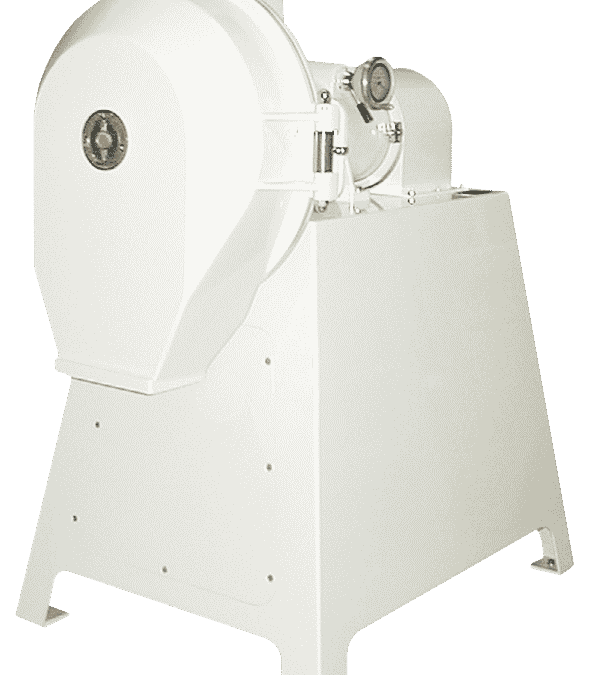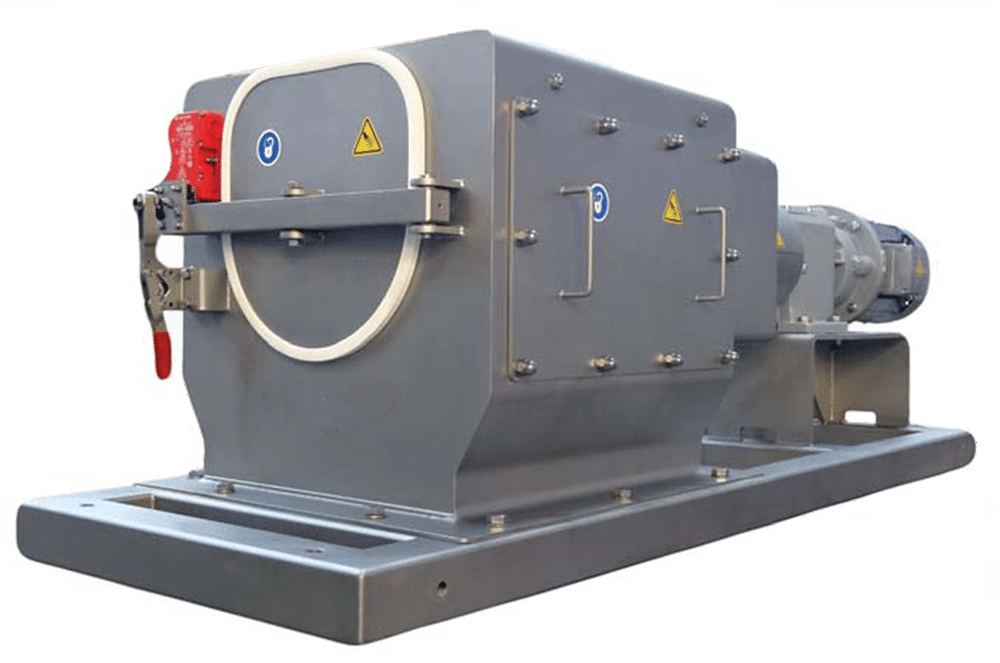Dairy 3A Screeners
3-A sanitary vibratory screeners are the best option for removing impurities from milk, cream, cheese, and other dairy products because the vibration reduces pooling and allows more flow-through per square inch. Forced screening is not recommended as screen breakages are the second most common source of metal contaminants in dairy products (more on this in the Costco section below). As with most equipment we sell, these gap-free screeners have been optimized for the application and are available in sizes from 24 to 60 inches in diameter.

Designed to scalp oversize particles as small as 38 microns (400 mesh) from dry bulk materials or solids-laden slurries, this unit can be disassembled without any tools for rapid sanitizing. The interlocking flange of the screen frame completely encompasses the support ring of the screen, allowing the wire mesh of the screen to extend entirely to the interior walls of the frame, eliminating the gap found in conventional screeners where materials could accumulate.
The sanitary, gap-free design can eliminate contamination caused by bacterial growth while also improving sanitizing efficiency, making it suitable for food, dairy, and pharmaceutical products. The screens are mounted on support rings using FDA-approved epoxy and sealed with FDA-approved gasket material. They can also be provided with a mesh-tolerance certificate. The wire mesh screening material is available in 304, 316, and “magnetic” 400-series stainless steel that can be captured by a downstream magnet if broken. They can also be equipped with either single or twin imbalanced-weight gyratory motors and can be supplied with a dust-tight cover.
Low Profile Option
The low-profile option, also called a check-screener, uses two unbalanced-weight gyratory motors located on opposing exterior sidewalls instead of a single motor positioned below the screening chamber, which greatly reduces the minimum height requirement. This low-profile configuration allows on-size particles to pass quickly through the screen in a vertical discharge path at higher rates than circular screeners that have centrally mounted gyratory motors and horizontal discharge paths. Check-screeners do not have a discharge for sorting and is only for catching contaminants, so any contaminants/oversize material must be manually removed or eliminated using a vacuum.
A Word About Screeners and Costco’s X-Ray Exception
Although untrue, Costco believes that x-ray cannot find metals in dairy products, so they provided an exception in their universal x-ray requirements for suppliers. On these grounds they said dairy producers could use screeners instead of x-ray. If satisfying Costco’s requirements is your primary goal, these vibratory screeners are the safest to use. But if foreign material contamination is a high priority for you, we recommend using x-ray anyway, because broken screens are the largest cause of metal contaminants in dairy products, after mixers. If the cost of x-ray is prohibitive for your company, a cheaper precaution is to use a centrifugal sifter with a mesh screen. But either way, the mesh gap needs to be smaller than the maximum contaminant size.
If you have any questions or would like a quote, simply fill out the form below or give us a call!
Related Equipment

Trough Belt Conveyors
Trough conveyors are belt conveyors where the bed or idle pulleys are shaped to bend the belt and cup the product. This improves the belt’s carrying capacity by helping the product mound and provides a degree of protection from elements and...

Cereal Grain Mill
One of the most versatile commercial mills on the market, the Cereal Grain Mill (model MHA 600D) can be set to gently crack grains or finely mill them to flour. Though suitable for a wide range of products, it is most popular for cereal grains such as wheat, maize, rice, barley, and oats because of the unique control it allows.
As a member of the disc mill class, it uses two spinning discs to precisely reduce particle size. Because the discs can be set as far apart or as close together as needed, it allows processors to strike the balance that can’t be reached with roller or hammer mills. Throughput varies per product, but is capable of up to 4500 lbs/hr.
A micrometer hand wheel allows precise and convenient control, and the discs are easily changed should they wear.

Cone Mills
Cone Mills use a spinning apparatus, selected for the application, which grinds product against a perforated screen. Screen sizes and rotor spacing can set to achieve price grinds with product between 5 mm and 250 μm. Cone mills are known for their versatility, able to grind fatty, moist, and inconsistent product effectively.

Lump Breakers
These Lump Breakers from can also be used to classify materials based on particle size by use of a built-in screen. All Lump Breakers can be customized on project-by-project bases to optimize their respective application. For example, they can also be equipped with cantilever grinder beaters for fine chemical, pharmaceutical, and food applications. They employ a number of thoughtful design elements such as non-drive-end access doors, which allow for easy-access to the screen for cleaning and exchanges.
